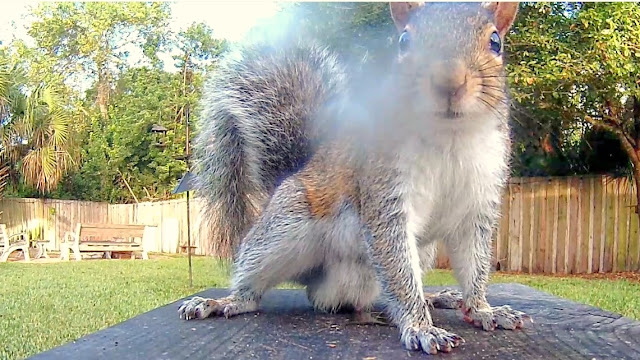Gray Squirrels urine mark profusely over four days on a wooden tabletop in the Backyard which has become a new territorial boundary marker. Setting up a camera trap for Blue Jays I have been training resulted in an unexpected amazing discovery of just how much territory marking Gray Squirrels do - and how critical their sense of smell is to communication. You will learn perhaps more than you ever wanted to know about how Gray Squirrels use their sense of smell to communicate. The large oak tree seen in the background of all the videos has been their traditional territorial boundary marker - but after the wooden table was in the Backyard for about a week for the Blue Jays the Gray Squirrels apparently adopted it as a new key position marker and checkpoint in their territorial geography database. Watch in amazement - BTW this is not just a male thing - the females can mark with the best of them!
Squirrels mark territory with scent and may actively defend that territory in direct interactions. Gray squirrels have two main scent marking tools, urine and scent glands near the mouth. They will frequently urinate as they move along travel routes and they often stop and rub their oral scent glands as well. When two squirrels meet they will greet each other by sniffing these oral scent glands, sometimes placing their hands on the other squirrels shoulders, which gives the appearance of kissing and hugging and has given rise to many a novelty greeting card photo.
The second main territorial marking method gray squirrels is chewing a large vertical stripe on a large dominant tree in their territory and using this visual marking as a scent marking post. All squirrels passing by this stripe will stop and smell who has been around and add marks of their own. These marks are often maintained for generations (squirrel generations that is).
New HD videos uploaded frequently. Subscribe at:

No comments:
Post a Comment